
Peugeot E-208 Review (2024)

Introduction
Most people can recognise an electric vehicle as soon as they see it.
But with the Peugeot E-208, the only way you’d know it was electric was if you heard it (or, perhaps more to the point, didn't).
As you’ve probably gathered, the E-208 is the all-electric version of the fossil-fuelled 208, with the engine replaced by an electric motor.
It is quite an achievement for Peugeot.
Many current vehicles weren't designed with electric motors in mind, so it’s never as simple as just ripping out an engine and putting an electric motor in its place.
It tends to be especially true of small cars – and sadly, that's meant some iconic names have entirely fallen by the wayside as electrification gathers pace.
For example, although Ford’s decision to discontinue the Fiesta was due to several factors, the obstacles in making an electric version were one of them.
There are no such problems for Peugeot, which is on a roll at the moment, with a new design language producing nice-looking cars which are a step up from what was rolling off its production lines before.
The E-208 has just had a facelift, so let’s take a look.
Select's rating score* - 3.3 / 5
At a Glance
The Peugeot E-208 is quiet to drive – and the E-208 keeps the fact that it’s electric just as hushed.
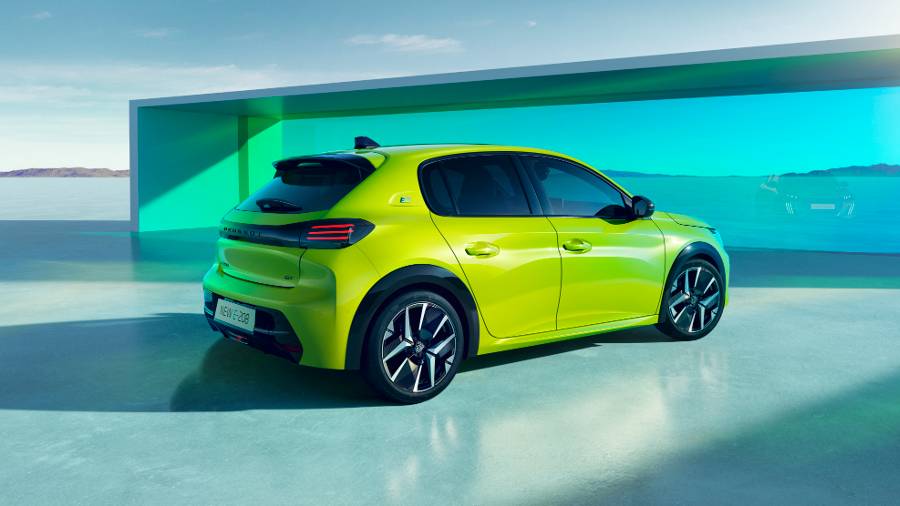
At a glance, you’d never know there wasn’t an engine underneath the bonnet, with only the odd ‘E’ badge giving the game away.
Yes, the grille at the front is a solid panel (and slightly revised), but you’re so distracted by the plethora of lines that make up its shape, that you won’t notice.
Sat next to it are three ‘claw’ vertical light bars on each side for the day-running lights, which have been repositioned slightly, housed in what looks like large air intakes, while the front bumper is also new.
The front is more chiselled and a lot squarer than the rounded Peugeots of yesteryear, though the body shape is more rounded at the back, with bulbous bumpers.

There are three light bars on each side at the rear, too. They are now horizontal (they were vertical before), linked together by a piano black strip that runs the entire width of the tailgate, accommodating the word 'Peugeot' in uppercase lettering in the middle.
There is also a roof spoiler, while the sides have several indentations and creases above a sporty side skirt.
The Peugeot looks superb – and, in GT trim, you could be forgiven for thinking it’s a hot hatch.
Let’s hope it’s as good to drive as the aesthetics suggest.

Key Features
Peugeot produces the car in four trim levels – Active, Allure, E-Style and top-of-the-range GT. However, only the top two grades are available on the electric E-208. At the same time, E-Style is unavailable in the petrol and hybrid models.
In case you’re not sure whether to go electric, we’ll cover all the 208 grades.
Active trim gets 16-inch steel wheels, black door mirror caps, a leather steering wheel, cloth seat trims and LED headlights. It also vaunts automatic windscreen wipers and lights, climate control, a 7-inch standard-definition touchscreen with DAB radio, a Peugeot i-Cockpit with a 3.5-inch digital instrument display, tinted windows, voice recognition, rain-sensing wipers and rear parking sensors, plus keyless entry and start.

Allure trim gets all the above but with 16-inch two-tone diamond-cut alloys, front parking sensors, shark-fin radio antenna, fabric leather-effect seats, a 10-inch high-definition touchscreen and four USB sockets. It also boats an acoustic windscreen, a 10-inch digital instrument display and two cupholders, plus electronic folding door mirrors.
E-Style adds embossed fabric leather-effect upholstery and various additional safety features (which we'll cover later). But it only gets a 7-inch standard-definition infotainment screen (albeit with SatNav) and a 3.5-inch digital instrument display and pre-heating functionality.
The GT trim gets the more prominent 10-inch infotainment, and digital instrument displays back, adding 17-inch two-tone diamond-cut alloys, courtesy lighting to the external door mirrors (providing exterior illumination when getting in and out of the car at night) plus a black diamond roof, wireless phone charger and aluminium pedals.
As you can see, the entry-level Active trim is very well-equipped as standard, so it should suffice for most people's needs. But in an era of tech, the temptation of the larger screens (plus alloy wheels) means most will want to jump to Allure.
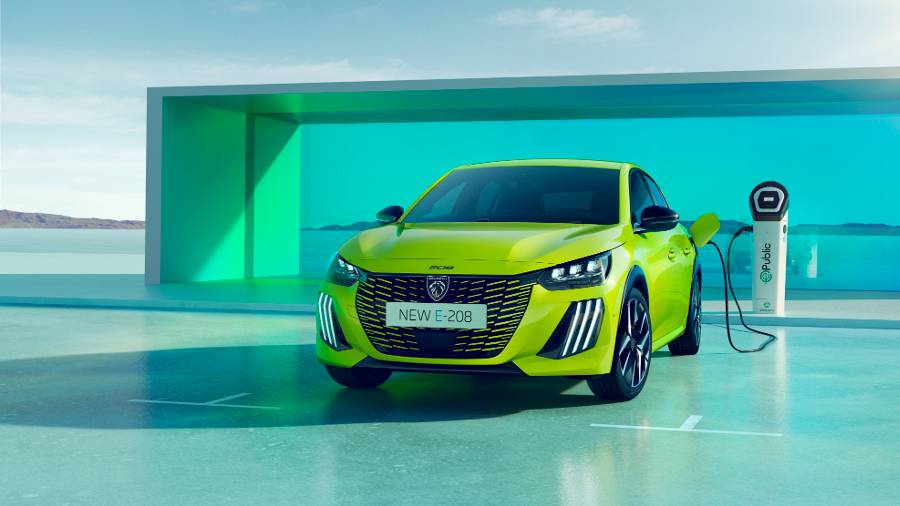
But, with neither available on the E-208, it means if you want the more prominent displays, you're forced to opt for the flagship GT trim in the electric version (and the GT has more power, too).
It is a clever trick on Peugeot’s part, but it does make it expensive.
Regarding powertrains, the 208 can be had with 75PS or 99PS petrol, while there are also 100PS or 136PS hybrids.
But as we’re testing the e-208, we’re interested in the electric motor.
This produces 136PS if you choose the E-Style version and 156PS with the GT variant.
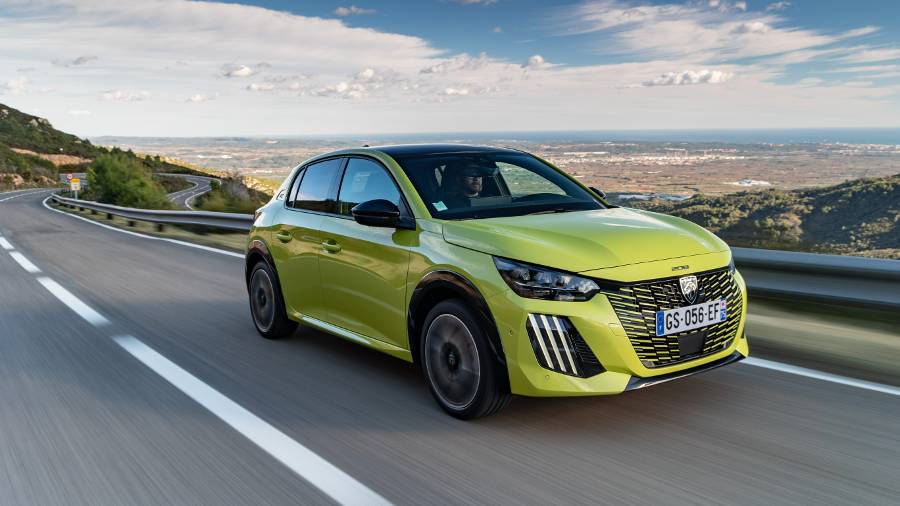
Range & Batteries
The E-Style E-208 gets a 50kWh battery, suitable for 225 miles of range.
Yet the GT E-208, despite having 20PS more power and only a slightly bigger 51kWh battery, can do 248 miles.
This seems strange, but in any event, range figures are usually unachievable in the real world, where everything from ambient temperature to road conditions to driving style can impact the achieved range in practice.
The E-208’s electric range is better than many of its rivals can manage.
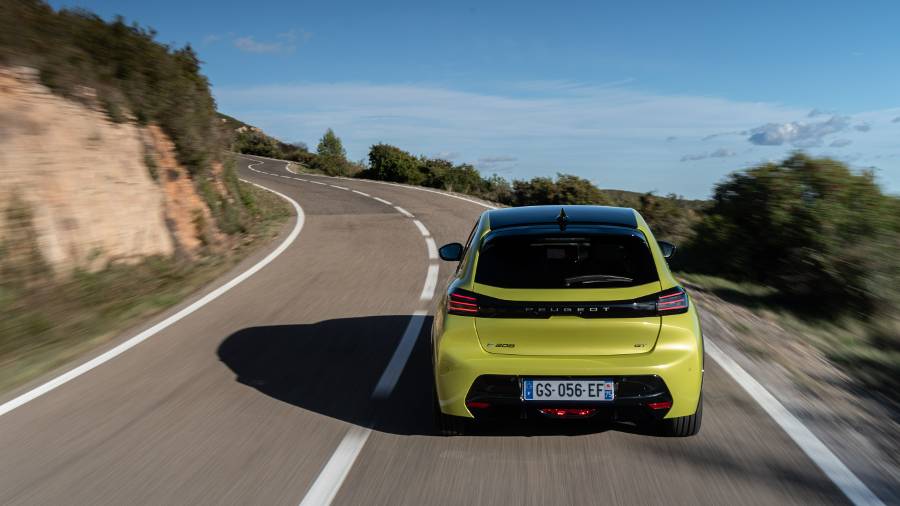
Performance & Drive
We are testing the top-of-the-range GT version, which gets from 0-62mph in 8.2-seconds. The acceleration isn’t rip-roaring, but sufficient, nevertheless.
If you seek performance, however, many of its foes can do the 62mph dash quicker.
As with most electric vehicles, there’s an instant burst of acceleration as soon as you touch the throttle, and this certainly makes the e-208 feel quicker than it is.
What’s strange, though, is that the lower-powered E-Style is actually 0.1 seconds quicker to get to 62mph than the GT.
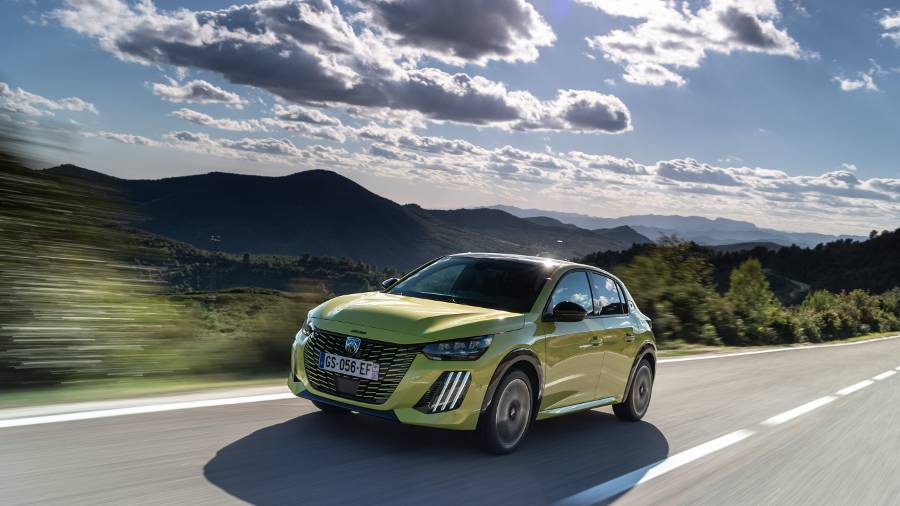
This is likely due to the added weight of the batteries in the GT, which provides its greater range even though it’s only 1kWh bigger than that of the E-Style.
In terms of suspension setup, it's pretty soft given its sporty looks and, in truth, the E-208 isn't particularly athletic to drive.
Sadly, that means handling isn't a particularly strong point, with the E-208 suffering from more body roll than we'd expect for a car of this size when tackling bends at speed. Mind you, the grip levels feel on a par with what we expected.
For day-to-day driving, it's okay, but if you're seeking an electric hot-hatch, don't let looks deceive you – it isn't a hot-hatch by a long way.

Nevertheless, the steering wheel weights up nicely in the bends, which helps increase your confidence, but there's little feedback and we had hoped it would be more fun to drive.
It is not bad, though – and less of a focus on handling tends to mean it’s more comfortable to ride in, something which is undoubtedly true of the E-208.
It does a reasonably good job of dealing with pock-marked roads and potholes. There isn't much wind noise, either, thanks to the acoustic windscreen, which does well to dampen it out. You get this on both E-Style and GT versions (though, if you decide for the standard 208, you don’t get this at entry-level).
Of course, wind and road noise tend to be relative – it's arguably more noticeable in an electric car, given there's no engine note to drown it out.
The regenerative braking is impressive, with the brake pedal feeling accurate and predictable, and you can make the effect stronger if you like.
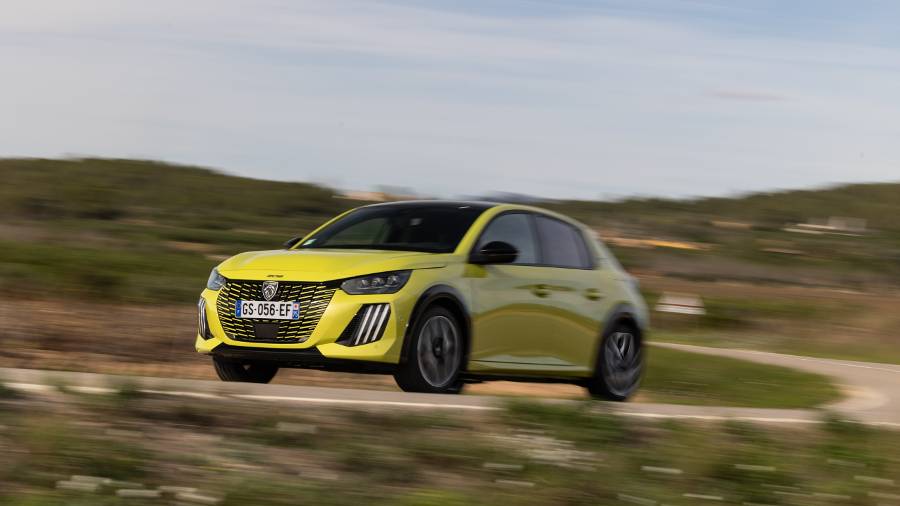
Charging
The E-208 beats its main rivals in terms of charging speeds.
100kW is offered, providing a 10-80% top-up in around 30 minutes, as long as you use a charging point supporting such speeds.
A 7kW home wall box can do a complete empty to full battery replenishment in around seven-and-a-quarter hours.
An optional extra can increase this to 11kW, bringing the charging time down quite a bit.

Running Costs & Emissions
With no engine, you’ll not need to worry about fuel economy or emissions, while visits to petrol stations are a thing of the past.
By comparison, the petrol and hybrid 208s range from 48 to 65mpg, producing 96 to 132g/km of CO2.
Peugeot has improved in reliability in recent years but is still below average. Electric cars are a different kettle of fish, though, and statistics suggest it performs better than expected.

Interior & Technology
Peugeot has dramatically improved its interiors in recent years, and the cabin of the E-208 is as notable as the exterior.
It feels solid and well built, giving a cockpit-like feel, which is likely deliberate given Peugeot gives some of its tech the 'i-Cockpit' name.
There are plenty of soft-to-the-touch materials on show and the cheaper thin plastics which used to plague average family cars are few and far between.
Our test car has the larger 10.0-inch screens, which are pleasant to use and relatively straightforward, with an excellent 3D effect.

Something that’s difficult to do while driving along though is adjusting the climate control, which is frustratingly buried into the infotainment touchscreen.
Most manufacturers are leaving the climate control settings as physical dials, but some have gone down the rabbit hole of integrating it digitally.
However, there are shortcut buttons to adjust it, which mitigates it somewhat, but it's simply not as effective as reaching for a dial without taking your eyes off the road.
Annoyingly, the shortcuts take up so much room that it also defeats the purpose of having the bigger display.

Nevertheless, the 10.0-inch infotainment system is excellent to use, with sharp, clear graphics, plus it's pretty responsive.
It is not as clear in its smaller form if you opt for the E-Style (or entry-level Active trim if you choose not to have an E-208), but it's the same system underneath, and it does a good job.
The 10-inch digital instrument display is configurable, too, so you can choose to display SatNav directions in front of you, which makes things easier.
Wireless Apple CarPlay and Android Auto are both included on all models.
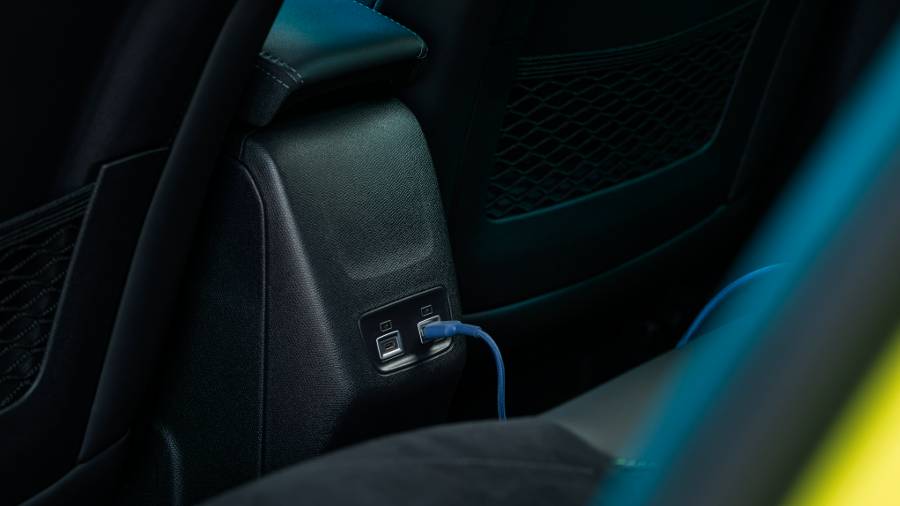
Space & Practicality
One thing that Peugeot has tried to do (for some reason) is to reinvent the wheel.
Whereas we’re all used to looking at the speedometer through the steering wheel, Peugeot has decided that what we should be doing is looking at a digital instrument display over the top of the wheel.
As such, the steering wheels in some Peugeots – including both the 208 and E-208 – are flat-topped and flat-bottomed.
The idea is to position the wheel lower down than you would normally so the wheel is more in your lap.

This divides opinion greatly. You get used to it eventually, but whether it's workable depends on your height, size and generally preferred seating position.
With that in mind, we recommend checking this out carefully before committing to leasing one, as there’s no ‘standard’ wheel available as an optional extra.
The seats are comfortable, while the GT version gets upgraded seats which provide more support, as well as electric adjustment for the driver, which makes things more convenient.
Both legroom and headroom are good in the front, given it’s a small car, and even taller occupants shouldn’t struggle.

It is alright in the back, too, and there's plenty of room for feet. However, a combination of a tall person in the front and a lofty person in the back will leave someone having to sacrifice legroom.
There is a slope in the roofline towards the rear, so headroom isn't quite as generous. In fact, our GT car was fitted with an optional panoramic roof, which ate further into the available space and made it uncomfortable for a tall rear-seat passenger.
Boot space in the E-208 is 311 litres, which isn't amazing, as many of its competitors offer more.
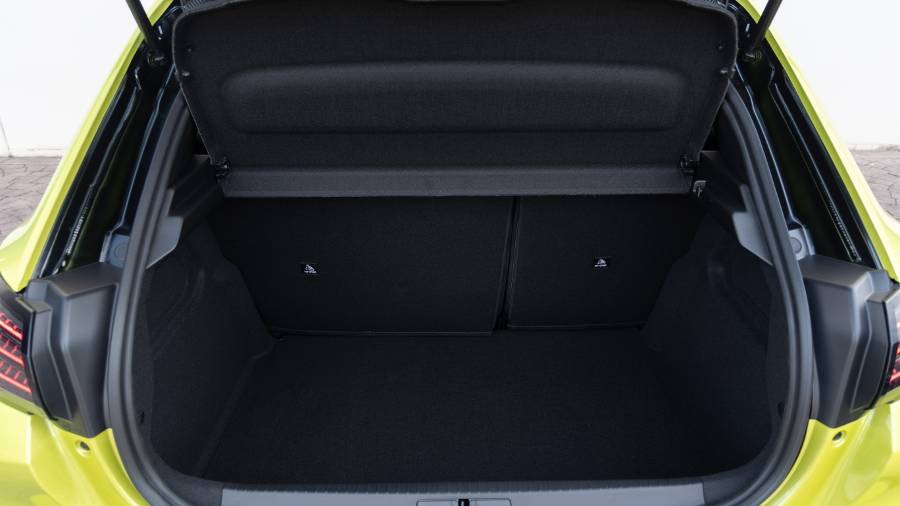
However, refreshingly, no space is lost compared with the petrol and hybrid versions. Often, electric cars have to shed some capacity due to the need to house batteries underneath the boot floor.
The available room expands to 1,106 litres if you fold the rear seats down, though they only fold in a 60:40 split, not the more versatile 40:20:40 arrangement, which is typical of this car size.
The boot floor isn’t height adjustable, so you’ll have to make do with a bit of a lip.
There's lots of interior storage space, with generously sized door bins, a tray to put your keys on, and an area to store your phone (which wirelessly charges on our test car).

Safety
The standard Peugeot 208 was examined in 2019 and earned a four-star rating from crash-testing experts Euro NCAP.
That is disappointing, as Euro NCAP made its testing criteria far more stringent the following year and even more so earlier in 2023, suggesting the 208 is lacking.
The rating is valid for the E-208, too.
Most of its rivals have achieved five-stars under the more stringent criteria, too.
Nevertheless, you still get a raft of safety technology, including automatic emergency braking, lane-keeping assist, driver attention warning, speed limit recognition and tyre pressure monitoring.
Unfortunately, blind spot monitoring is optional and only available on the GT trim (as well as Allure if you opt for a petrol or hybrid).
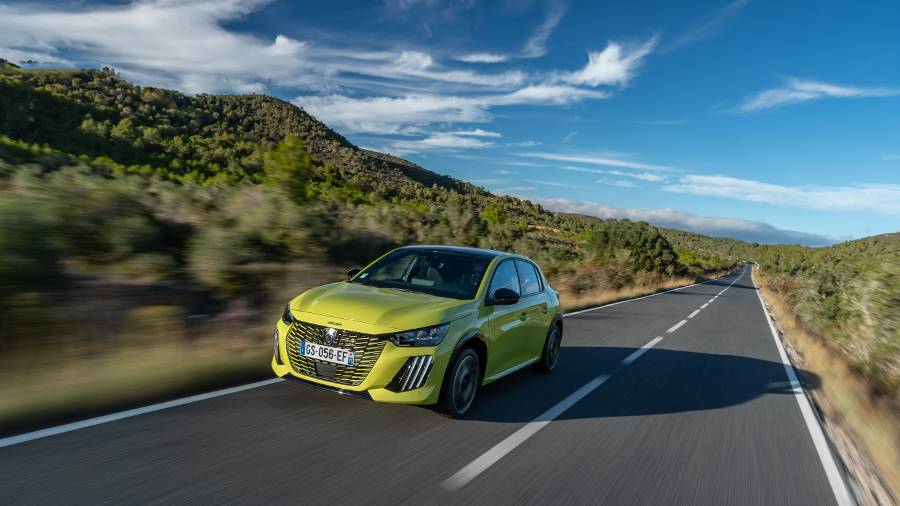
Options
There are several body colours to choose from, with Agueda yellow being the default shade, while white, dark grey, light grey, black, red and blue are the others.
The GT trim gets the option of Alcantara upholstery if you’re happy to pay extra.
Options also exclusive to GT trim include 3D SatNav, a Parking Pack (with park assist), a panoramic glass roof and the Drive Assist Pack, which includes adaptive cruise control.
The 11kW on-board charger that we mentioned earlier is available, as is an Open & Go system, which provides a powered tailgate.

Rival Cars
There are countless leasing competitors for your money, though in terms of all-electric cars, the list is a little lighter, but still just as formidable.
The MG4 EV wowed the automotive world when it was launched, offering a car that ticks many boxes at a reasonable price.
There is also the Vauxhall Corsa Electric and, at the premium end of the market, the Volvo EX30.

The Fiat 500 is available in electric form nowadays, too.
One outsider you won't have considered is the surprisingly good BYD Dolphin (above), which is cheaper and has plenty of likeable features.

Verdict & Next Steps
The Peugeot E-208 puts up a good fight and could be a very sensible choice for an all-electric small family hatchback.
However, you’re still paying a hefty premium for the electrification over the petrol models – and the GT version is too expensive to recommend.
Even if your budget only stretches to the E-Style variant, there's little reason to lease one when you could have a Volvo EX30 for only a little extra.
The Volvo is more practical, too, while those who are more budget-conscious might be swayed by the much cheaper MG4 EV.
The Peugeot E-208 has plenty going for it, with superb looks, generous equipment levels and a lovely interior.
But it's not as practical as its rivals, has a fiddly driving position, and the best value-for-money trim level – Active – isn't available unless you choose a petrol or hybrid version.
It is a decent car to lease, but anything worth having on the E-208 can be matched or exceeded by some of its closest competitors, especially at its price point.
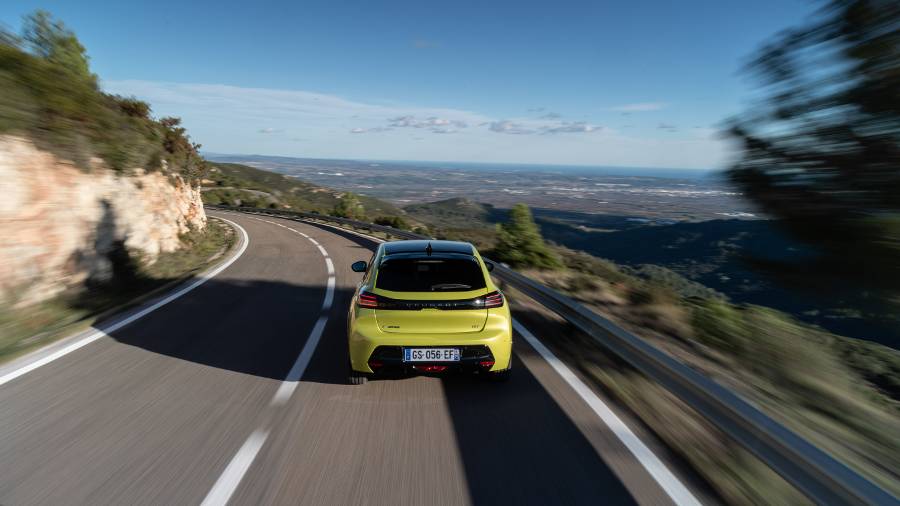
Where to next?
View latest Peugeot E-208 lease deals - from just £244 per month inc VAT**.
Call us on 0118 3048 688 or hit the green 'Enquire' button for more details.
Looking for a great leasing deal? Check out our incredible range of Special Offers and Lease Deals.
New hatchback? Read our latest Reviews and find the right model for you.
Want to know more about leasing? Take a look at our comprehensive Leasing Guides.
Interested in everything motoring? Why not catch up on all the latest Car Leasing News.
**Score based on Select’s unique meta score analysis, taking into account the UK’s top leading independent car website reviews of the Peugeot E-208
**Correct as of 08/04/2024. Based on 9 months initial payment, 5,000 miles annually, over a 36 month lease. Initial payment equivalent to 9 monthly payments, or £2,196.63 (Plus admin fee) Ts and Cs apply. Credit is subject to status.




















